Study on the instability condition and landslide mechanism of subgrade slope in Mei–Da Expressway
-
摘要:
文章对广东梅大(梅州—大埔)高速公路路基边坡失稳和滑坡的成因机制进行了初步研究和分析,基于香港路基边坡失稳滑坡调查研究资料、成果和现场勘察获得了失稳路基边坡附近完全风化花岗岩土的颗粒分布和液限塑限含水率,定量计算、分析了该段路基边坡稳定性。通过Google地形图分析了失稳路基边坡附近的几个可能汇水区域和汇水量,对该路基边坡失稳与滑流的成因机制进行了分析。研究认为山坡公路建设需要开挖削坡和填土,可完全改变自然山坡汇水流域;公路可成为瞬态河流,将大量雨水跨流域调流到其他公路边坡或山坡,导致边坡失稳和滑坡,形成公路坍塌丢失。这种路基边坡失稳模式亟待深入研究并加强防范。
Abstract:This paper presents a preliminary investigation of the instability and landslide of a road subgrade slope that occurred on May 1, 2024 along Mei–Da Expressway. The investigation method is on the basis of past investigation results and findings about instability and landslide of road subgrade slopes in Hong Kong. The Mei–Da Expressway subgrade was constructed by cutting and filling on mountainous slopes. The landslide occurred at a fill slope along a gully. The fill soil was excavated from local soil of completely decomposed granite (CDG). The paper tests the particle size distribution and liquid and plastic limits of the three CDG soil samples that were excavated from adjacent natural slopes. It then examines the stability of the fill slope with a simplified geological slope model. It further investigates the catchments before and after the road construction. It then presents a possible mechanism for the slope instability and landslide. The field observations by others can confirm this mechanism. The cutting and filling of the hillside slopes significantly changed the runoff paths of the three natural catchments above the road. The road can intercept the runoff along the three gullies and direct all the runoff into the fill slope. The large volume of rainfall water can erode and liquefy the fills, which can cause the instability and landslide of the road subgrade slope. There is an urgent need to further investigate this mode of road subgrade instability and landslide since it is not uncommon.
-
0. 引言
作者长期从事高速远程滑坡的研究,并取得了系列成果。随着中国青藏高原地区铁路、公路、水电等重大工程兴建与“治边稳藏”战略的实施,愈发感到仅从理论上研究滑坡的运动速度已经很难保障青藏高原重大工程和国土空间地质安全。因此,从防灾减灾实践中逐渐凝炼形成了“高位远程地质灾害”的研究命题,指启动于陡坡上部且成灾范围可达数百米,甚至数千米的视线外的远程复合型链式地质灾害,突破了原先偏重于滑坡单一灾种的研究范畴,强调了多灾种复合转化的成灾模式和高势能的链灾动力学过程研究[1]。
高位远程地质灾害通常规模巨大,体积可达数亿立方米以上,降落高差达数千米。势动能转化会产生巨大的能量,驱使碎屑物质运动距离超过10 km,可能形成流域性灾害链,影响范围可达周边数百公里,尤其是青藏高原及其周边地区,给人类工程活动带来巨大挑战[2 − 5]。2006年2月17日,菲律宾南莱特岛发生高位滑坡-碎屑流-泥石流灾害,掩埋了Barangay村庄,造成1 221人死亡,约1.9×104人流离失所[6];2018年10月10日和11月3日,西藏东部连续发生了两起高位远程地质灾害,两次阻断金沙江干流,形成流域性灾害链,造成数十亿人民币的经济损失[7 − 11];2021年2月7日,位于喜马拉雅山南麓的印度查莫利发生冰岩山崩,引发的洪水灾害摧毁了下游几十千米远的2个在建水电站,死亡人数超过200人[12 − 15]。因此,高位远程地质灾害具有强致灾能力,严重威胁重大工程建设运营及人民生命财产安全,迫切需要开展失稳机理、成灾模式和防治技术等研究。高位远程地质灾害的失稳机理、成灾模式和防治技术不仅是中国防灾减灾研究的热点和难点,也是当前世界上防灾减灾研究难题之一[12, 16 − 22]。
1. 国内外研究历程回顾
高位远程地质灾害的概念可追溯到19世纪80年代。1881年9月10日,瑞士Elm小镇板岩采石场发生滑坡灾难,导致三分之二的房屋被毁,死亡115人。灾害发生第二天,政府委派瑞士联邦理工学院Albert Heim教授开展应急调查和指导处置。现场景象让Heim大吃一惊,该滑坡高差达600 m,运动距离达2.3 km,堆积体积达10×106 m3,没有滑动迹象,到处都呈现出流动的特征。随后,他与当地官员合写了《Elm村滑坡》一书[23]。半个世纪后,在他的最后一部杰作《滑坡与人类生活》[24],Heim把Elm村滑坡划分高山崩落(bergfall)、空中跳跃(luftsprung)、水平流动和气浪(flachstrom and brandung)三个过程,并用“Sturzstorm”术语描述了高位岩崩发生后在水平方向上运动很远但垂直落差相对较小的动力过程。Heim的工作奠定了高位远程地质灾害的研究基础。
进入20世纪后,随着对所发生的几起复合型特大滑坡的系统研究,西方国家逐步提出了高位远程地质灾害成因理论与研究方法。1903年4月29日,位于加拿大落基山脉的阿尔伯塔Frank小镇发生山体滑坡,滑坡体体积达36×106 m3,运动过程持续约100 s,平均速度30 m/s。滑动距离大于3 000 m,等效摩擦角12.3°,摧毁了下方的煤矿和小镇南端,导致83人死亡、23人受伤[25 − 26]。Cruden等[27]将Frank滑坡分类为“复合、极其快速,干岩崩-碎屑流”。对Frank滑坡的研究历程长达100多年,至今仍不断有专门研究Frank滑坡的新文献发表[28],在背斜轴易灾地质结构、初始破坏地质力学过程、下伏煤层采空松动触发机理、高位远程流动机理、碎屑流堆积结构和沉积、滑坡残体现今稳定性及风险等方面形成了系列研究成果[18, 29 − 32]。1963年10月9日,意大利瓦伊昂水库左岸约2.7×108 m3的顺层滑坡以约25 m/s的速度整体下滑,激起250 m高的涌浪,翻越坝顶,冲毁了坝下游的兰加隆镇和附近5个村庄,死亡1925人,成为人类历史上最严重的水库滑坡涌浪灾难。瓦伊昂滑坡灾难发生后,众多学者开展了滑带地质力学特征、孔隙水压力促滑机理、高速运动机理、涌浪灾害、高速滑坡风险管理、物理力学试验和数值模拟等内容,取得的丰硕成果推动了高位远程地质灾害机理和防灾减灾的发展[16, 21, 33 − 39]。1974年4月25日,秘鲁安第斯山脉Mayunmarca发生了一场巨大的灾难性滑坡-碎屑流-泥石流,这是西半球有史以来最大的一次高位远程地质灾害,其最大运动距离为8.25 km,最大高差为1 870 m,堆积体积约为10×108 m3。滑坡形成堰塞坝淤堵了曼塔罗河,堰塞湖库容估计为6.7×108 m3,回水38 km。滑坡发生44 d后,堰塞湖决口,洪峰流量约为1×104 m3/s,造成451人死亡和巨大经济损失。这次灾难引起了大家高度关注,从地质学、地貌学和流体力学等开展了研究[40 − 41]。2006年2月17日,菲律宾南莱特岛发生复合型高位滑坡-碎屑流-泥石流灾害[6],是21世纪以来造成人员死亡最多的高位远程地质灾害之一,受到了高度关注,学者们在滑坡的断层控制机理、高速远程液化滑动机理等方面取得了重要进展[17, 42 − 44]。
20世纪80年代,中国发生了多起高位远程地质灾害,造成了特大人员伤亡和财产损失,由此,在吸收西方研究成果的基础上,逐渐深化了中国高位远程地质灾害成灾理论与减灾技术。1980年6月3日,湖北远安盐池河磷矿发生灾难性大规模山体崩塌-碎屑流,总体积1.3×106 m3,高差约200 m,形成面积约 500 m×478 m的堆积区并阻塞下方河道,形成堰塞塘,最大堆积厚度近40 m。崩塌碎屑流摧毁了磷矿工矿区,导致284人死亡[45 − 46]。1983年3月7日,甘肃东乡洒勒山发生黄土高速远程滑坡,在不到1 min的时间内急剧向南滑动1000 m左右,滑体东西宽700~1100 m,南北长1100~1400 m,总体积约31×106 m3,摧毁了4个自然村,死亡220人,重伤22人[47 − 51]。1985年6月12日,湖北秭归新滩滑坡再次复活,体积30×106 m3,其中约3.4×106 m3进入长江。高速下滑的土体,将400余年的新滩古镇全部推入长江。涌浪至对岸爬坡高49 m,江中涌浪高达39 m,摧毁小型船只96艘,死亡12人,造成长江断航12 d,由于预报及时,新滩镇上1 000余人全部及时转移[52 − 55]。1989年7月10日,四川溪口县城发生滑坡-泥石流高位远程地质灾害,高速冲向溪口镇北角。整个滑坡事件从启动到停积历时约60 s,摧毁溪口水泥厂、川煤12处、红岩煤矿、溪口粮库和沿途的数个村庄,导致221人死亡[56 − 57]。中国工程地质学界对这些灾难性滑坡灾害进行了深入剖析,提升了复合型高位远程灾害启动失稳、动力学、监测预警和防灾减灾的研究水平,并奠定了专门从事这方面研究的科研梯队。20世纪80年代以来,中国学者对高位远程地质灾害的启程、高速运动、链动转换过程等进行了系统研究[58 − 60],随着对西南岩溶山区、西北黄土地区、汶川强震山区和青藏高原高位远程地质灾害的研究,逐渐形成了具有中国特色的科研体系,并出版了多部专著[3, 61 − 72]。
2. 防灾减灾面临的问题
2.1 高位远程地质灾害的典型特征
高位远程地质灾害是指包含两种或两种以上基本地质灾害种类,具有崩滑复合失稳机理、势动能复合状态转化和链动远程复合成灾特征,并可引发堰塞坝和涌浪等次生效应的链式地质灾害[18, 73 − 74]。这种灾害是造成全球群死群伤特大地质灾害的主要类型,成为国内外防灾减灾科技攻关的难点及热点问题(图1)。总体上看,高位远程地质灾害可以划分为崩滑启动区、远程运动区和堆积成灾区3大部分(图2),并具有4个典型特征。
——高位剪出。灾害源区启动位置高于承灾对象,并且剪出口位置高度通常大于100 m,甚至数千米。如2018年发生于金沙江右岸的西藏江达白格滑坡,剪出口与河床高差约200 m,但前后缘高差达850 m,滑动入江距离1200 m,形成了体积超过30×106 m3的堰塞体阻塞金沙江。2008年汶川地震诱发的四川绵竹小岗剑高位远程滑坡碎屑流灾害,最高点高程1 980 m,最低点高程为960 m,相对高差为1020 m,滑坡启动区剪出口高程约1350 m,距地面堆积区高差约390 m,主沟长度2.59 km,总物源体积3.34×106 m3。
——远程成灾。灾害源区启动位置具有超视距特征。关于“远程”的含义相对较为含糊,不少学者建议按照滑坡滑覆区与滑源区长度之比进行划分,当比值为1.5~2.0时,可划分为远程滑坡。以比值作为远程滑坡划分的标准,从科学含义上表面上更为合理,但难以指导实际工作。例如,对于小型滑坡,当滑源区长度为50 m,只要滑覆区长度大于100 m,就可定为是远程滑坡,但其防灾减灾意义并不大。远程滑坡的基本特征表现在从滑源区剪出并滑动一定距离后,其原有结构基本解体。从地质灾害防灾减灾的角度上看,采用绝对距离(例如滑程大于500 m)更为适用,便于指导中国地质灾害调查从“房前屋后”近程范围扩展到“坡要到顶,沟要到头”的远程范围。
——高速运动。高位远程地质灾害在运动过程中具有惯性加速过程,速度通常大于20 m/s。传统把滑坡运动大致分为:蠕动变形、慢速滑坡、中速滑坡和高速滑坡,青藏高原滑坡运动速度还可以将高速滑坡的速度进一步细分。但国内外迄今未形成统一的高速滑坡运动速度的划分标准。作者等采用摩擦-流动模型对四川都江堰三溪村滑坡和西藏波密易贡滑坡进行了计算和分析,发现三溪村滑坡最大速度可达到42 m/s,易贡滑坡最大速度达到100 m/s[75],可以看出高速滑坡的速度变化区间仍很大。
——动力剪切。高位远程地质灾害动力剪切作用导致成灾过程具有放大效应。这种放大效应包括:①底蚀作用导致成灾体体积明显增大。如汶川地震触发的青川东河口滑坡形成了高位远程滑坡-碎屑流地质灾害,滑源区体积约6×106 m3,自高程1050 m抛掷剪出,并铲动下伏基岩,形成滑坡碎屑流,体积增加了4×106 m3,致使7个村庄被埋,约400人死亡。②侧蚀作用导致两侧斜坡稳定性明显降低,诱发次生滑坡,甚至滑动堵塞沟道,形成堵溃放大效应[76]。如2000年发生的西藏易贡滑坡堰塞坝溃决后,沿途铲刮易贡藏布和雅鲁藏布江两岸数百处滑坡,导致固体物源明显增加[2]。
2.2 高位远程地质灾害研究面临的问题
(1)高位启动源区早期识别
高位远程地质灾害的启动源区往往位于数百米高的植被茂密的山坡,或者位于数千米高的雪山。由于人迹难至,导致启动源区的早期识别难度极大。2017年6月23日,四川茂县新磨村发生高位远程滑坡-碎屑流灾害,导致83人遇难。新磨滑坡发生前,运用常规的滑坡分析方法判断,滑源区的岩体发生失稳滑动,主要以倒石锥的形式堆积于剪出口下部斜坡带上,视摩擦角一般在35°~40º,对约2 000 m之外的村庄不会带来毁灭性的灾难(视摩擦角约为25°),很难判断出会发生高速远程的滑动[20]。新磨滑坡发生后,意大利佛罗伦萨大学Emanuele Intrieri教授迅速利用滑坡发生前的2014年10月9日至2017年6月19日时段的欧空局哨兵一号卫星45幅C波段SAR图像进行了形变分析,识别出了茂县新磨滑坡清晰的前兆形变信号。InSAR数据揭示了失稳前滑坡源区最大位移速率达27 mm/a,且滑坡多处测点显示从2017年4月开始加速变形。结果显示卫星雷达数据具有大范围探测和间隔时间短的优势,可以作为不稳定斜坡区的调查手段,也可用于滑坡动态监测[77]。新磨滑坡灾害的惨痛教训推动了中国地质灾害“空-天-地”一体化早期识别技术的快速发展和规模化应用,特别是2018年西藏金沙江白格特大滑坡发生后,中国逐步建立了融合“空-天-地”多源遥感观测,以“形态、形变、形势”为内容的重大隐蔽性地质灾害隐患识别技术方法。但是,高位地质灾害源的早期识别方法和技术仍处于早期探索研究阶段[78]。2019年7月,贵州省水城县鸡场镇发生滑坡-碎屑流复合型灾害,滑坡长约1 800 m,共摧毁当地居民21间房屋,77人被掩埋,最终导致51人死亡。在滑坡发生前,曾开展过多期光学遥感和InSAR雷达遥感调查,由于滑源区玄武岩体植被茂密,未能进行准确的识别[79]。近年来,随着青藏高原重大工程、国防工程和边疆城镇建设发展对防灾减灾的需求,复合灾害源的识别方法研究取得了显著进展,包括:失相干影响、大气波动影响、地形影响等。这样,初步形成了不同地区的InSAR识别方法(表1)[80 − 81]。
表 1 不同海拔山区高位远程地质灾害识别InSAR集成方法Table 1. Integrated method of InSAR for identification of high-altitude and long-runout rockslides in mountain areas with different altitudes海拔 典型灾害 技术方法 主要技术 低山(500~ 1000 m) 滑坡、崩塌、塌陷 ① SBAS-InSAR技术(一般情况推荐);
② PS-InSAR技术(相干性较好时推荐)①基于数值气象模型的大气延迟改正;
②解缠误差探测及改正技术;
③坡向形变投影技术中山(1000~ 3500 m) 大型滑坡、崩塌等 ① SBAS-InSAR技术(一般情况推荐);
② PS-InSAR技术(相干性较好时推荐);
③ POT时序技术(大量级形变监测推荐)①基于数值气象模型的大气延迟改正;
②解缠误差探测及改正技术;
③坡向形变投影技术;
④升降轨数据联合监测;
⑤叠掩、阴影掩膜技术高山(3500~ 5000 m) 高位滑坡、崩塌、冰川 ① SBAS-InSAR技术(时间序列形变监测推荐);
② Stacking-InSAR技术(大范围调查推荐);
③ POT时序技术(大量级形变监测推荐)①基于数值气象模型的大气延迟改正;
②解缠误差探测及改正技术;
③坡向形变投影技术;
④升降轨数据联合监测;
⑤叠掩、阴影掩膜技术;
⑥顾及DEM的配准技术极高山(>5000 m) 超高位滑坡、崩塌、冰川 ① SBAS-InSAR技术(时间序列形变监测推荐);
② Stacking-InSAR技术(大范围调查推荐);
③ POT时序技术(大量级形变监测推荐)①基于数值气象模型的大气延迟改正;
②解缠误差探测及改正技术;
③坡向形变投影技术;
④升降轨数据联合监测;
⑤叠掩、阴影掩膜技术;
⑥顾及DEM的配准技术;
⑦可变窗口偏移量跟踪技术;
⑧跨平台偏移量跟踪技术(2)高位灾害源易灾地质结构
对1902年加拿大Frank滑坡失稳机理不断深化认识的过程堪称特大滑坡研究的经典案例。在灾害发生初期应急调查认为:滑坡沿着一组陡倾外倾节理向下移动,其类型被划分为落石(rockfall)或块流(block flow),并沿用50多年。1972年以来,经过详细地质调查,查明滑坡母岩主要由古生代石灰岩组成,地质构造位于龟山背斜东翼,可以识别出3组不连续面:层面节理和垂直于层面的两个正交节理组。背斜下部受龟山逆冲断裂带控制,而下部为中生代煤系地层(存在采煤活动),这种地质构造控制下的斜坡失稳是典型的山体崩滑(rockslide avalanche)[26, 31]。为了吸取瓦伊昂滑坡惨剧的教训,很多学者对滑坡的地质构造、滑动面的地质结构、滑坡的蠕变过程和库水变动的影响及其地质力学特征进行了长期的研究和反思。瓦伊昂水库位于阿尔卑斯造山带南部托克山的北侧,滑坡体岩层形态上陡下缓,前缘具有良好的临空条件。两个先存褶皱系统(约东西向和南北向)使滑动面变形,而且配套的次级构造(小断层和裂缝)很可能控制了滑动过程。尤其是呈凹形的滑动面的位置与主向斜(Massalezza向斜)核部重合[33 − 35, 38, 82]。岩石斜坡破坏通常与离散褶皱、断层和剪切带以及相关的构造破坏有关,将褶皱、断层、不连续性等地质构造地质填图和理论融入复合型滑坡地质结构和失稳机理的研究至关重要[83 − 88]。
中国学者在复合型滑坡的地质结构研究方面,取得了新认识[5, 89 − 94]。黄润秋[57]对大型岩质滑坡的结构类型和失稳机理进行了系统研究,提出了中国内陆大型滑坡发育最根本的原因是具有有利的地形地貌条件,并建立了5种典型的地质-力学模式,认为“锁固段”在岩质边坡的变形控制和稳定性机制中具有重要地位。秦四清团队[95 − 97]围绕锁固段型滑坡失稳预测难题,构建了锁固段型滑坡失稳预测理论,提出了锁固段型滑坡分类,构建了锁固段型滑坡演化灾变模式,建立了锁固段型滑坡快解锁突发型和慢解锁渐变型两种灾变模式的临界位移准则。
作者等长期开展高位远程地质灾害易灾地质结构防控理论研究,特别是在褶皱地层区和断裂构造带二类易灾地质结构失稳机理方面取得了多项成果,提出了斜倾山体视向滑动关键块体、褶皱轴部厚层山体塔柱状溃曲失稳、复理石斜坡断裂锁固型失稳、构造混杂软弱带复合失稳和岩溶山体底部采矿失稳等模式[2, 13, 20, 98 − 104]。
(3)高位远程链动机理
Heim[24]最先注意了Elm滑坡-碎屑流的链动传递过程,认为后部的碎裂流体通过碰撞过程将大部分动能传递到前面,从而推动了前部碎屑流体并协助其向前,即类似接力赛,接力棒作为动能的象征,从一棒传递到下一棒[105]。许多学者也对这种链动传递机理进行了研究[106]。
高位远程地质灾害由滑坡、崩塌向碎屑流、泥石流等链动转化过程涉及到滑坡等固体与流体多体动力学问题。可以将高位远程地质灾害链的动力分区分为:高位启动(rockslide和rock avalanche)、势动转化(energy transformation)、动力剪切(rock debris and entrainment)和液滑/流滑(mudflow)(表2)[3]。
表 2 高位远程地质灾害链动机理与成灾模式简表Table 2. Summary of chain mechanism and disaster mode of high-altitude and long-runout rockslides分区 地质特征 动力特征 基本方程 高位
启动在重力长期蠕变下的不稳定山体、冰雪和冰湖等危险体形成高位滑坡或崩塌,特别是暴雨、地震和融雪等特殊工况会加剧高位成灾体的启动 物源初始启动具有较高的重力势能;在锁固效应和特殊工况作用下,具初始动能 极限平衡 势动
转化高位剪出后,在陡坡地段具有加速特征;大型崩滑体在气垫圈闭效应作用下,运动距离会增加;逐渐解体成为链状散体结构 重力势能逐渐转化为动能,流滑加速效应明显,形成链条冲击加载;转化过程中可产生空气层压缩效应 能量守恒、
动量守恒、
撞击理论等动力
剪切崩滑块体通过高势能转化为高速流滑体,撞击、剪切、铲刮沟道斜坡,形成底蚀铲刮体积增大效应;侧向冲刷岸坡坡脚,牵引触发滑坡,形成流体堵溃放大效应 因铲刮冲蚀效应流滑体运动速度降低;受堵溃效应影响流速和流量会出现明显的放大特征;由摩擦块体向流动散体转化 摩擦模型、
犁切模型等液滑/
流滑沟道含水量增加,形成剪切液化效应;流滑体碰撞粉碎化,形成碎屑流体;沟道宽缓,纵坡降较低,形成掩埋堆积成灾区 流滑体滑带形成剪切液化层,剪切阻力减小,导致运动距离增加;或干碎屑流体在剩余驱动力作用下保持远程运动 滑带液化效应、
颗粒流模型、
Voellmy模型等近年来,国内、外许多研究者对高位、高速远程滑坡后破坏的多相态转化的动力学机理开展了大量研究,滑坡运动过程模型、动力学模型和数值模拟算法研究成为远程滑坡风险评估和防灾减灾研究的重要方向。
高位远程地质灾害的链动机理具有明显的体积效应,因此,对于高位远程滑坡动力学研究一般都放在体积达百万立方米的大型滑坡上[24, 107 − 110]。Heim[24]分析了20种发生滚石和崩落流动的滑坡,既不能完全用滑坡也不能用崩塌来刻画体积很大的下落体的运动。由于地质学家们更早采用了英文单词“Debris flow”来描述运动比较缓慢的泥石流。这一单词也使得在研究碎屑流和泥石流的组成材料、运动学和动力学时,带来了很多混淆。因而,Heim只能采用了“trummerstorm,sturzstorm,schusstorm,fallstorm,wursstorm,steinstorm,blockstorm”等术语来描述这种复合型的滑坡山崩-碎屑流高位运动,强调了其后缀都带上了“storm”,显示了碎屑流体流动性和颗粒无粘接性。著名科学家许靖华教授从“岩崩引发的灾难性碎屑流动”(catastrophic debris streams (sturzstorm) generated by rockfall)系统性地评述了Heim提出的流体特征[111]。Howard建议用“Avalanche”这术语来定义灾难性碎屑流(catastrophic debris)[112]。
在岩质崩滑-碎屑流动力学研究过程中,出现了2种路径:一种是采用与雪崩(avalanche)相似的理论,另一种是采用了与泥石流(mudflow)相似的理论[113]。Voellmy在1955年出版了《On the Destructive Force on Avalanche》,这不仅是雪崩动力学方面首部成果,而且运用流体力学的连续性方程、运动方程和能量方程建立了冰崩碎屑流运动距离和冲击力等的分析方法,也为高位远程滑坡-碎屑流的研究奠定了基础。Voellmy模型考虑了颗粒摩擦和湍流运动的组合形式,已经广泛应用于雪崩、岩质崩滑、流动性滑坡、滑坡碎屑流、泥石流等颗粒流体分析研究中。Hungr[114 − 122]在Voellmy研究基础上,进行了岩石崩滑导致的高速运动碎屑流超强流动性特征研究,提出“等效流体”的概念,将复杂的滑体构成简化为某一种组成的“等效流体”,同时,假设滑坡碎屑流为浅流运动,通过拉格朗日方法基于曲线坐标和移动网格,求解连续性方程和动量方程。Hungr还研发了DAN3D软件并赠予作者研究团队使用,在中国昭通盘河、都江堰三溪村和镇雄赵家沟等多起滑坡碎屑流模拟分析中,取得了很好的结果[123 − 125]。Iverson[126]在2012年出版的《泥石流和岩崩的机理》(Mechanics of Debris Flows and Rock Avalanches)专著中,将岩崩、碎屑流与泥石流结合起来考虑,并重点研究了泥石流的二相流特征。许多学者开展了这类颗粒固体和孔隙液体二相流行为的物理基础和数学结构的研究,其中,干岩崩代表了可以忽略孔隙流体压力的一种极限流动(即单相流),在运动过程中可以在足够的水环境下转化为泥石流,孔隙流体压力在单相到二相流转变中起关键作用[127 − 133]。实际上,这两种路径的研究理论都建立在流体力学连续性方程、运动方程和能量方程基础上,并无本质上的区别,但是,在流体材料、动力类型和边界层的研究方面均有明显差异。用于构建岩崩到泥石流动力学的二相流模型的物理原理涉及连续介质混合理论、土壤力学和流体力学的概念,但对于单相和二相流都可用连续性方程和运动方程加以刻画,并在实际中将流体力学方程组求解大为简化[126]。
最近20 a来,随着计算机算力提高,能够揭示崩滑块体大位移、旋转和滑动的离散单元法取得了显著进展,特别是与流体力学模拟方法结合,可以模拟和揭示块体-颗粒和泥石流体的运动学和动力学过程,以及涌浪灾害等次生效应的动力学过程[134 − 137]。
(4)高速运动边界层效应
通常将运动速度在20 m/s以上的滑坡称为高速滑坡[20]。自1882年Heim对Elm滑坡的这种高速运动的滑坡碎屑流特征研究以来,关于高速滑坡-碎屑流与底坡面的作用机理一直是研究重点,形成了多种观点[122]。
1)空气层润滑效应。在高速远程滑坡边界层研究中,最受到关注也最受争议的观点之一是“气垫效应”。Shreve对美国阿拉斯加谢尔曼滑坡、美国加利福尼亚黑鹰滑坡和瑞士Elm滑坡进行了相关的研究后,提出了气垫效应导致高速远程滑动的观点[109, 138]。当阿波罗登月计划实施,在月球上发现了类似“Sturzstrom”的沉积物时,有学者指出即使没有空气,也会形成远程流动,因此,Shreve关于空气润滑的假设受到了严重打击[112]。但是,气垫效应现象一直受到中国学者的高度关注,特别是青藏高原的高山峡谷区发生了多起高位远程滑坡碎屑流灾害,深化了气垫效应的研究[75]。邢爱国等[139]结合飞机飞行气动特征分析方法,通过风洞试验研究了高速滑坡在近程活动阶段的滑行特点,认为高速滑坡在滑动中将产生机翼效应,不仅使滑坡飞行得更远,而且使位能更多地转变成滑坡飞行的动能,使滑体获得更大的速度。一般地,这种产生凌空飞行的空气动力升力将使滑体增加约1/3的滑行历程。殷跃平等[74]指出汶川映秀牛圈沟滑坡-碎屑流、北川城西滑坡、青川东河口滑坡-碎屑流具有明显的气垫润滑特征。
2)滑动带的热因素。滑坡中的燃烧现象一直受到高度关注,并提出了燃烧促滑作用的假说[140 − 141]。Habib[142]提出了孔隙气压力促使大型滑坡滑动的观点,即摩擦蠕变引起的加热可能导致孔隙流体蒸发,而这种流体压力的增加,反过来又可能导致沿滑动带的有效应力迅速降低,从而减少摩擦阻力,并可能导致灾难性破坏。摩擦热汽化机理与滑坡的规模有关,可能导致了Grazier[143]、Flim[144]和Vaiont[145]的三次灾难性滑坡事件。随后,Tamburi[146]在实验室间接地证实了这种热致蠕变的效应。不少学者关注到了很多例滑坡体中页岩的烧灼现象,提出了滑动过程中滑体中页岩的破裂,从而允许空气和水分进入并促进自燃的相反观点。近年来,中国的年轻学者在滑坡热效应研究方面取得了新的进展。王玉峰等[147]基于青藏高原易贡滑坡的研究,提出了热孔压减阻效应与热润滑减阻效应,并对滑坡基底层试样产生明显弱化现象的原因进行分析。胡伟等[148 − 149]对重庆武隆鸡尾山和四川绵竹大光包高速远程滑坡进行了深入研究,提出了因摩擦产生大量热能,导致部分地层中的碳酸盐岩分解,产生CO2,亦可能对滑坡的运动起到减阻作用。何思明等[150]采用数值模拟分析认为,摩擦生热会引起基底层温度的升高;伴随着温度的升高,基底层中的水发生体积膨胀,产生超孔隙水压力,对滑体的运动产生促滑作用。
3)滑带土液化促滑。Heim在1882年对瑞士Elm滑坡研究后,首次提出了沿崩滑-碎屑流底坡面裹挟的液化饱和土层对远程滑动的润滑机理。这种机理在随后的Frank滑坡远程运动堆积层中得到证实[25]。在很多高位滑坡碎屑流堆积物中及其周围,也可以发现饱和基底发生变形和液化的证据[151]。Seed[152]是早期系统研究地震作用下土体液化诱发滑坡问题的学者。Sassa等在滑动面液化研究方面做出了杰出贡献,采用不排水环剪试验方法,对日本兵库县南部地震滑坡等进行研究,得出滑动带产生的粒子破碎,导致不排水条件下孔隙水压力增加,即使在中密-密实初始土体结构条件下,也会产生高速滑坡的结论,提出了“滑动面液化”高速滑坡机制。另外,还提出了滑带土颗粒剪切破碎导致超孔隙水压力增加,进而促使剪切阻力降低的理论,并研制了系列高速环剪设备[17, 153 − 156]。汪发武等[157]、王功辉等[158]对滑带液化促滑机理进行了大量研究,并取得了新进展。中国学者运用Sassa建立的滑带土液化促滑理论很好地分析了贵州关岭、云南镇雄和深圳渣土场等多起滑坡远程液化滑动机理[159 − 160]。
4)底层动力剪切效应。高位远程滑坡通常具有典型的动力剪切特征,导致滑坡体积明显放大和运动距离明显增加,致使因成灾范围的扩大造成严重的损失。许多学者对滑坡-碎屑流底层的动力剪切效应进行了研究[129, 161 − 164]。Hungr等[121]注意到了这种裹挟效应,并建议了“滑坡-碎屑流”术语用于考虑岩质滑坡沿途裹挟液化层而形成大量的碎屑流时的情形。Iverson[126, 129 − 130]提出滑坡-碎屑流等效流体在基床面上高速运动时,底部剪切裹挟铲刮松散可铲刮层,并建立了力学模型分析碎屑流厚度和运动速度对铲刮深度的影响,将流体材料自上而下分为滑体层、裹挟层、基底层,从动量和质量交换的角度求解裹挟变量(滑体速度、铲刮体积及铲刮深度等变量),描述动力剪切作用对滑体体积增加的影响。殷跃平[20, 165]对四川茂县新磨滑坡-碎屑流的动力剪切机理进行了探讨,指出滑坡高位剪出滑动,连续加载并堆积于斜坡体上部,体积达3.90×106 m3,导致残坡积岩土层失稳并转化为管道型碎屑流。碎屑流高速流滑至斜坡下部老滑坡堆积体后,因前方地形开阔、坡度变缓,转化为扩散型碎屑流散落堆积,具有“高速远程”成灾模式,基于可变形滑块-弹簧模型和土力学地基破坏模式,提出了滑坡-碎屑流动力剪切过程计算的犁切模型。高杨等[166 − 167]对滑坡-碎屑流的动力剪切模式进行了总结分类,主要有嵌入铲起模式、裹挟刮带模式、冲击滑移模式和冲击飞溅模式,并采用接触力学、弹塑性力学和岩土力学耦合方法,提出了地表可铲刮层在附加冲击荷载作用下铲刮变量的理论计算方法,认为竖向冲击和切向剪切是滑体冲击铲刮过程的两种主要作用方式。王文沛等[168]对新疆伊犁流状滑坡的形成机制和动力学过程进行了研究。陆鹏源等[169]通过室内滑槽模型试验研究了滑坡-碎屑流冲击铲刮,认为冲击型动力剪切主要是由于滑体前的冲切破坏和滑体中后源的剪切破坏。
5)等效流体剪切模型。对于滑坡-碎屑流体与底坡面的剪切模型,主要建立在摩擦系数和滑体法向应力相关的库仑摩擦定律之上[113, 127]。Hungr[116]对底坡面产生的流动阻力进行了研究,认为流动阻力取决于滑坡-碎屑流材料的流变性,而且是几种已知流体的不同参数的函数。Hungr等[118]在流体模型基础上,针对滑坡-碎屑流进行分析,经过经验改进提出了等效流体分析方法。碎屑流与基床之间的主要流动剪切本构模型有:Laminar模型、Turbulent模型、Plastic模型、Bingham模型、Frictional模型、Voellmy模型。Voellmy模型考虑到了颗粒摩擦和湍流运动的组合形式,更适用于雪崩、岩质崩滑、流动性滑坡、滑坡碎屑流、泥石流等分析中[170]。Vollemy边界层摩擦阻力包括了由碎屑流块体法向正应力产生的库伦型摩擦项和与运动速度平方成正比的湍流摩擦项。为了进一步分析碎屑流体的非线性特征,Ramms等[171]对Voellmy模型进行了修正,增加了屈服应力项。
(5)风险评估与防灾减灾
由于对高位远程地质灾害失稳机理、流动性和运动距离的认识仍处于探索阶段,因此,高位远程地质灾害的风险评估方法尚未成熟可靠。雪橇模型是一种经验和机理相结合的模型,在滑坡-碎屑流体积较大、地形简单的地区具有良好的实用性,特别是采用滑前滑坡体和滑后堆积体质心的连接线(能量线)进行滑动距离的快速推断,更适用于野外的快速分析[110]。许多学者[23, 25, 29 − 30, 109, 172 − 173]对复合型滑坡的运动机理和成灾风险进行了研究。殷跃平等[75, 160]运用滑带液化和颗粒流理论对滑坡远程运动及成灾风险进行了研究,提出了基于机理的风险评价方法。崔鹏等[4, 69, 71, 174]在地表产流流量激增、土体破坏物质供给激增、沟道堵塞体级联溃决流量放大和动床侵蚀规模增大等4个山洪泥石流的形成机理研究基础上,构建了基于灾害动力过程的风险评估与风险制图方法,提出可用于具体灾害点减灾的风险管理内容和风险调控技术、灾害防治的工程与非工程措施与技术方案,初步形成了一套基于山洪泥石流动力过程的风险评估与风险管理理论与方法体系。高位远程地质灾害形成的次生灾害风险也是重点研究方向之一。黄波林等[101 − 102]以三峡库区为基地,系统开展了滑坡涌浪次生灾害风险评估理论与技术的研究,构建风险评估范围界定、涌浪危险性分析、易损性分析、涌浪风险估计和涌浪风险划分5个分析步骤的水库滑坡涌浪风险评估技术框架,为山区水库城镇防灾减灾提供技术支撑和借鉴。范宣梅等[175]对全球410座体积大于1.00×106 m3的滑坡坝进行编录分析,并提出了统一术语和分类的方法。
3. 亟待加强的研究方向
高位远程地质灾害成为了中国防灾减灾科技攻关的一项重点内容。自然资源部和科技部等制定的国家相关地质灾害防灾减灾科技创新计划,提出了开展以灾害链为重点的特大型高速远程滑坡-碎屑流(泥石流)-涌浪-堰塞湖等复合型成灾模式研究,建立快速预测评估方法和技术指标体系等研究。Science期刊发表了加拿大Calgary大学Shugar等[12]53位学者联合撰写的《印度喜马拉雅山查莫利特大岩冰山崩2021灾难》文章,代表了国际上关于复合型冰岩滑坡及流域性次生灾害研究的重要方向之一。复合型的高位远程滑坡灾害失稳机理、成灾模式和防治技术是世界性的难题,已引起国内、外科学界和工程界的高度关注,特别是强震、极端暴雨和人类活动耦合作用下的滑坡灾害防治技术长期安全性成为研究的热点和难点[5, 22, 64, 104, 125, 94, 176 − 189]。
随着铁路、公路、水电工程、边疆城镇和国防建设的发展,复合型高位远程滑坡灾害的防灾减灾将面临前所未有的新挑战。青藏高原和西南高山极高山区普遍存在启动于数百米,甚至数千米高度的特大型高位远程滑坡灾害,其规模巨大,具有超远视距的隐蔽性,启动后高速运动,运移距离远,且成灾模式复杂,多形成滑坡、碎屑流、堰塞坝和涌浪等链生地质灾害,防治难度大,其失稳机理、成灾模式和防治技术仍是中国滑坡防灾减灾研究的热点和难点,也是当前世界上防灾减灾研究难题之一,主要体现在如下几方面:
1)易灾结构地质力学研究。青藏高原及周边的高位远程地质灾害受到推覆断裂构造带、断裂构造结合带和剪切构造带控制,西南山区的高位远程地质灾害受到扬子地台褶皱带的控制。在地震、暴雨、冰雪和采矿等因素诱导下,形成了不同类型的高位远程地质灾害。例如,龙门山推覆断裂构造带、鲜水河走滑断裂带、金沙江断裂构造结合带和喜马拉雅东构造结等不同的断裂构造地段的高位远程地质灾害在失稳机理和启动型式上具有各自的特征。扬子地台区背斜和向斜轴、顺向、斜向、逆向地层组合,形成了不同的山体崩滑失稳机理和启动特征。如何识别高位风险源成为高位远程地质灾害防灾减灾的前提。因此,应该开展青藏高原构造结合带断裂山体和扬子地台褶皱系褶皱山体的地质构造、地层岩组构成的易灾地质结构型式,高位失稳破坏和冲击启动机理,以及地震、暴雨、采空和雪线变化等动力触发因素的地质力学问题研究。
2)高位远程链动力学研究。青藏高原高山极高山区形成的复合型高位远程地质灾害具有冰/岩崩-碎屑流-泥石流-堰塞坝-堰塞湖溃决山洪-侧蚀次生滑坡链动过程。因此,提出了高位远程地质灾害的块体、颗粒体和固液二相流体等地质材料多尺度多体多相转化过程;高速滑坡-碎屑流-泥石流等非理想流体的质量、动量和能量传递机理;高位远程动力学的微地貌特征和边界层效应等研究方向。殷跃平等[1]通过对青藏高原高山极高山区的高位远程地质灾害研究,认为高位滑体在经历破碎解体、动力剪切等一系列边界层效应之后形成高势能碎屑颗粒流,具有明显的流态化特征,并通过大型物理模型试验平台揭示了高位滑坡碎屑流势流体链动特征,以及紊流体和犁切体的边界层效应(图3)。进而提出了通过在基底层加设组合障桩群的方式人为改造高势能碎屑流体的边界层底坡,增大湍流边界层内湍动能的生成与组合障桩前“死区(dead zone)”范围的消能降险方法。
3)风险防控理论技术研究。21世纪以来,青藏高原和西南山区流域梯级水电工程、铁路和公路交通网络规划建设,边疆城镇和国防工程建设飞速发展,因此,急需研究风险规避措施和防治工程技术。第一,应该开展基于复合型灾害动力学过程的风险评价理论研究,提出不同工况下高位远程地质灾害的运动距离和影响区的研究方法;第二,根据高位远程地质灾害的链动机理,开展防灾、抗灾、救灾和备灾综合减灾措施研究,并针对特大型灾害,研发系列刚韧性消能技术,开展基于全链条链动机理的防治工程设计理论研究和技术研发。
4. 结语
复合型的高位远程滑坡灾害失稳机理、成灾模式和防治技术是世界性的难题,已引起国内外科学界和工程界的高度关注,特别是强震、极端暴雨和人类活动耦合作用下的滑坡灾害防治技术长期安全性成为研究的热点和难点。本文系统回顾了高位远程地质灾害的研究历程,探讨了高位远程地质灾害研究面临的挑战,揭示了高位滑坡碎屑流链动传递机理及边界层效应,提出可以通过改造高势能碎屑流体的边界层底坡,增大湍流边界层内湍动能的生成与组合障桩前死区范围的消能降险方法。
最后,针对青藏高原高位远程滑坡灾害防灾减灾将面临的新挑战,提出了亟待加强的研究方向:(1)青藏高原构造结合带断裂山体和扬子地台褶皱系褶皱山体的地质构造、地层岩组构成的易灾地质结构型式,高位失稳破坏和冲击启动机理,以及地震、暴雨、采空和雪线变化等动力触发因素的地质力学问题研究;(2)高位远程地质灾害的块体、颗粒体和固液二相流体等地质材料多尺度多体多相转化过程,以及高速滑坡-碎屑流-泥石流等非理想流体的质量、动量和能量传递机理;(3)基于高位远程灾害动力学过程的风险评价理论研究和防灾、抗灾、救灾和备灾综合减灾措施研究,以及研发系列刚韧性消能技术,开展基于全链条链动机理的防治工程设计理论研究和技术研发。
致谢:本文得到了李滨、高杨、王文沛、朱赛楠、张楠、张仕林、张田田等的支持与帮助!
-
-
[1] 殷跃平. 地质灾害风险调查评价方法与应用实践[J]. 中国地质灾害与防治学报,2022,33(4):I − II. [YIN Yueping. Geological hazard risk investigation and evaluation method and its application practice[J]. The Chinese Journal of Geological Hazard and Control,2022,33(4):I − II. (in Chinese )] DOI: 10.3969/j.issn.1003-8035.2022.4.zgdzzhyfzxb202204001 YIN Yueping. Geological hazard risk investigation and evaluation method and its application practice[J]. The Chinese Journal of Geological Hazard and Control, 2022, 33(4): I − II. (in Chinese ) DOI: 10.3969/j.issn.1003-8035.2022.4.zgdzzhyfzxb202204001
[2] 岳中琦. 香港滑坡灾害防治和社会效益[J]. 工程地质学报,2006,14(增刊1):12 − 17. [YUE Zhongqi. Hong Kong landslip prevention and its social benefits[J]. Journal of Engineering Geology,2006,14(Sup 1):12 − 17. (in Chinese with English abstract)] YUE Zhongqi. Hong Kong landslip prevention and its social benefits[J]. Journal of Engineering Geology, 2006, 14(Sup 1): 12 − 17. (in Chinese with English abstract)
[3] Geotechnical Engineering Office. Highway slope manual [R]. Hong Kong:Civil Engineering and Development Department,The Government of the Hong Kong Special Administration Region,2000:116.
[4] 黎佐贤. 一九九五年八月十三日深湾道山泥倾泻事件报告[R]//第一册:就土力工程处的调查所作的独立检讨. 香港:香港政府,1996:12. [SIR JOHN KNILL. Independent review of the investigation by the geotechnical engineering office[R]//Volume 1 of the report on the Shum Wan Road landslide of 13 August 1995. Hong Kong:Hong Kong Government,1996:12. (in Chinese)] SIR JOHN KNILL. Independent review of the investigation by the geotechnical engineering office[R]//Volume 1 of the report on the Shum Wan Road landslide of 13 August 1995. Hong Kong: Hong Kong Government, 1996: 12. (in Chinese)
[5] 土力工程处. 一九九五年八月十三日深湾道山泥倾泻事件报告[R]//第二册:山泥倾泻调查结果. 香港:香港政府土木工程署土力工程处,1996:49. [GEO. Findings of the landslide investigation[R]//Volume 2 of the report on the Shum Wan Road landslide of 13 August 1995. Hong Kong:Geotechnical Engineering Office(GEO),Hong Kong Government,1996:49. (in Chinese)] GEO. Findings of the landslide investigation[R]//Volume 2 of the report on the Shum Wan Road landslide of 13 August 1995. Hong Kong: Geotechnical Engineering Office(GEO), Hong Kong Government, 1996: 49. (in Chinese)
[6] YUE Zhongqi. Report surface drainage analysis of the 1995 Shum Wan road landslide site[R]. Expert witness report prepared for the Department of Justice,HKSAR Government,1999:4.
[7] YUE Zhongqi. Supplementary report no. 1 surface drainage analysis of the 1995 Shum Wan road landslide site[R]. Expert witness report prepared for the Department of Justice,HKSAR Government,2000:5.
[8] YUE Zhongqi. Supplementary report no. 2 surface drainage analysis of the 1995 Shum Wan road landslide site[R]. Expert witness report prepared for the Department of Justice,HKSAR Government,2000:10.
[9] 岳中琦,徐前. 现今斜坡工程安全设计理论的根本缺陷与灾难后果[J]. 岩土工程学报,2014,36(9):1601 − 1606. [YUE Zhongqi,XU Qian. Fundamental drawbacks and disastrous consequences of current geotechnical safety design theories for slopes[J]. Chinese Journal of Geotechnical Engineering,2014,36(9):1601 − 1606. (in Chinese with English abstract)] DOI: 10.11779/CJGE201409005 YUE Zhongqi, XU Qian. Fundamental drawbacks and disastrous consequences of current geotechnical safety design theories for slopes[J]. Chinese Journal of Geotechnical Engineering, 2014, 36(9): 1601 − 1606. (in Chinese with English abstract) DOI: 10.11779/CJGE201409005
[10] 岳中琦. 全球岩土工程领域共同挑战性问题的土力学理论根源[J]. 岩土工程学报,2015,37(增刊2):11 − 15. [YUE Zhongqi. Challenging issues in global geotechnical profession caused by soil mechanics[J]. Chinese Journal of Geotechnical Engineering,2015,37(Sup2):11 − 15. (in Chinese with English abstract)] DOI: 10.11779/CJGE2015S2003 YUE Zhongqi. Challenging issues in global geotechnical profession caused by soil mechanics[J]. Chinese Journal of Geotechnical Engineering, 2015, 37(Sup2): 11 − 15. (in Chinese with English abstract) DOI: 10.11779/CJGE2015S2003
[11] MA Shengnan,SONG Yi,LIU Jiawei,et al. Extended wet sieving method for determination of complete particle size distribution of general soils[J]. Journal of Rock Mechanics and Geotechnical Engineering,2024,16(1):242 − 257. DOI: 10.1016/j.jrmge.2023.03.006
[12] Geotechnical Engineering Office. Geoguide 1:Guide to retain wall design[S]. Hong Kong:Civil Engineering and Development Department,The Government of the Hong Kong Special Administration Region,2017:245.
[13] 岳中琦,康兴宇. 土质斜坡存在唯一最小安全系数的数据作图论证及原因分析[J]. 工程地质学报,2022,30(1):83 − 100. [YUE Zhongqi,KANG Xingyu. Existence and reason of a global minimum factor of safety of soil slopes[J]. Journal of Engineering Geology,2022,30(1):83 − 100. (in Chinese with English abstract)] YUE Zhongqi, KANG Xingyu. Existence and reason of a global minimum factor of safety of soil slopes[J]. Journal of Engineering Geology, 2022, 30(1): 83 − 100. (in Chinese with English abstract)
[14] 张明,殷跃平,吴树仁,等. 高速远程滑坡-碎屑流运动机理研究发展现状与展望[J]. 工程地质学报,2010,18(6):805 − 817. [ZHANG Ming,YIN Yueping,WU Shuren,et al. Development status and prospects of studies on kinematics of long runout rock avalanches[J]. Journal of Engineering Geology,2010,18(6):805 − 817. (in Chinese with English abstract)] DOI: 10.3969/j.issn.1004-9665.2010.06.001 ZHANG Ming, YIN Yueping, WU Shuren, et al. Development status and prospects of studies on kinematics of long runout rock avalanches[J]. Journal of Engineering Geology, 2010, 18(6): 805 − 817. (in Chinese with English abstract) DOI: 10.3969/j.issn.1004-9665.2010.06.001
[15] Geotechnical Engineering Office. Guidelines for classification of consequence-to-life category for slope features,GEO Technical Guidance Note No. 15 (TGN 15) [S]. Hong Kong:Geotechnical Engineering Office,Civil Engineering and Development Department,The Government of the Hong Kong Special Administrative Region,2007:14.
[16] 土力工程处. 斜坡岩土工程手册[S]. 香港:香港特别行政区政府土木工程署,1998:308. [GEO. Geotechnical manual for slopes[S]. Hong Kong:Geotechnical Engineering Office,Civil Engineering and Development Department,1998:308. (in Chinese)] GEO. Geotechnical manual for slopes[S]. Hong Kong: Geotechnical Engineering Office, Civil Engineering and Development Department, 1998: 308. (in Chinese)
[17] 任雾,陈蕾,刘昱秀. 梅大高速涉事边坡:脆弱地带与养护之困[N/OL]. 澎湃人物,(2024-05-12)[2024-07-15]. https://baijiahao.baidu.com/s?id=1798838205926423083&wfr=spider&for=pc [REN Wu,CHEN Lei,LIU Yuxiu. The slope involved in Mei–Da Expressway:The fragile zone and the difficulty of maintenance[N/OL]. The Paper Person,(2024-05-12)[2024-07-15].(in Chinese)] REN Wu, CHEN Lei, LIU Yuxiu. The slope involved in Mei–Da Expressway: The fragile zone and the difficulty of maintenance[N/OL]. The Paper Person, (2024-05-12)[2024-07-15].(in Chinese)
-
期刊类型引用(20)
1. 殷跃平,王文沛,邢爱国,黄波林,李滨,韩雷岩,金少强,杨勇,张晨阳. 海底滑坡动力侵蚀机理研究:回顾与展望. 中国地质灾害与防治学报. 2025(01): 1-15 .  本站查看
本站查看
2. 霍子豪,张仕林,胡卸文,谢维维,唐健峰,贺旭荣,王文沛. 基于固液耦合的滑坡碎屑流侵蚀流化机理研究. 水文地质工程地质. 2025(02): 138-149 .  百度学术
百度学术
3. 王新刚,王道正,王家鼎,黄强兵,胡胜,连宝琴,辜超颖. 黄土高原泥流灾变机理研究进展与发展趋势. 西北地质. 2025(02): 1-15+345 .  百度学术
百度学术
4. 孔德政. 某景区滑坡地质灾害治理及其效果分析. 福建建材. 2025(04): 59-64 .  百度学术
百度学术
5. 韩长玉,陈文超,张敏,金莉,王喆,杨振兴. 考虑颗粒形态的滑坡体运移特征研究. 水文地质工程地质. 2025(03): 234-244 .  百度学术
百度学术
6. Shaohua Gao,Yang Gao,Yueping Yin,Bin Li,Wenpei Wang,Tiantian Zhang,Haoyuan Gao. Characteristics of Massive Glacier-Related Watershed Geohazard Chains in the Eastern Himalayan Syntaxis, China. Journal of Earth Science. 2025(03): 1181-1197 .  必应学术
必应学术
7. 刘帅,王涛,曹佳文,刘甲美,张帅,辛鹏. 基于优化随机森林模型的降雨群发滑坡易发性评价——以西秦岭极端降雨事件为例. 地质通报. 2024(06): 958-970 .  百度学术
百度学术
8. 史安文,程谦恭,王玉峰,林棋文,明杰. 高速远程滑坡流态化地貌研究综述. 工程地质学报. 2024(03): 978-995 .  百度学术
百度学术
9. 喜文飞,成鑫,杨志全,刘美杉,郭峻杞. 基于SBAS-InSAR技术和BP神经网络的高位远程滑坡危险性分析研究. 昆明理工大学学报(自然科学版). 2024(03): 65-74 .  百度学术
百度学术
10. 党杰,杨亮,段方情,范宣梅. 贵州晴隆红寨大型古滑坡复活变形特征及成因分析. 中国地质灾害与防治学报. 2024(04): 25-35 .  本站查看
本站查看
11. 高路,赵松江,杨涛,胡卸文,余斌. 四川龙门山强震区特大泥石流综合防控技术体系研究. 中国地质灾害与防治学报. 2024(04): 13-24 .  本站查看
本站查看
12. 巢子豪,王斌,张伟. 广东省地质灾害隐患空间分布格局研究. 华南地震. 2024(03): 71-80 .  百度学术
百度学术
13. 孙才,铁永波,宁志杰,徐伟,熊小辉. 基于频率比-支持向量机耦合模型的四川省喜德县滑坡易发性评价. 沉积与特提斯地质. 2024(03): 547-559 .  百度学术
百度学术
14. GAO Shaohua,YIN Yueping,LI Bin,GAO Yang,ZHANG Nan,ZHANG Tiantian,GAO Haoyuan,LIU Xiaojie. Dynamic Characteristics of the Long Runout Rock-ice Avalanche at High Altitude——A Case from the Zelongnong Basin, Eastern Himalayan Syntaxis, China. Acta Geologica Sinica(English Edition). 2024(05): 1376-1393 .  必应学术
必应学术
15. 杨友刚,雷世兵. 青藏高原易贡藏布流域水电开发重大工程地质问题及对策. 工程地质学报. 2024(05): 1759-1770 .  百度学术
百度学术
16. 程谦恭,王玉峰,林棋文,冯止依,明杰,何可. 喜马拉雅造山带高速远程滑坡动力学机理研究的思考. 地质学报. 2024(11): 3238-3254 .  百度学术
百度学术
17. 刘家恺,朱杰勇,喻聪骏,王灿星,祝传兵,代旭升. 基于多源遥感的高山峡谷区崩滑识别及易发性评价. 化工矿物与加工. 2024(12): 62-73 .  百度学术
百度学术
18. 刘俊辰,王文沛,高杨,万佳威,高少华. 强震条件下西藏则隆弄沟高位滑坡失稳特征研究. 中国地质灾害与防治学报. 2024(06): 15-23 .  本站查看
本站查看
19. 王溢禧,赵俊彦,朱兴华,于美冬,陈彩虹. 贵德盆地席芨滩巨型滑坡前缘次级滑坡特征及其复活机理分析. 中国地质灾害与防治学报. 2024(06): 1-14 .  本站查看
本站查看
20. 万佳威,高浩源,高杨,肖金城,李军,李江山,李浩文. 西藏色东普沟2024年两期冰川泥石流堵江灾害发育特征研究. 中国地质灾害与防治学报. 2024(06): 24-32 .  本站查看
本站查看
其他类型引用(3)





 下载:
下载:







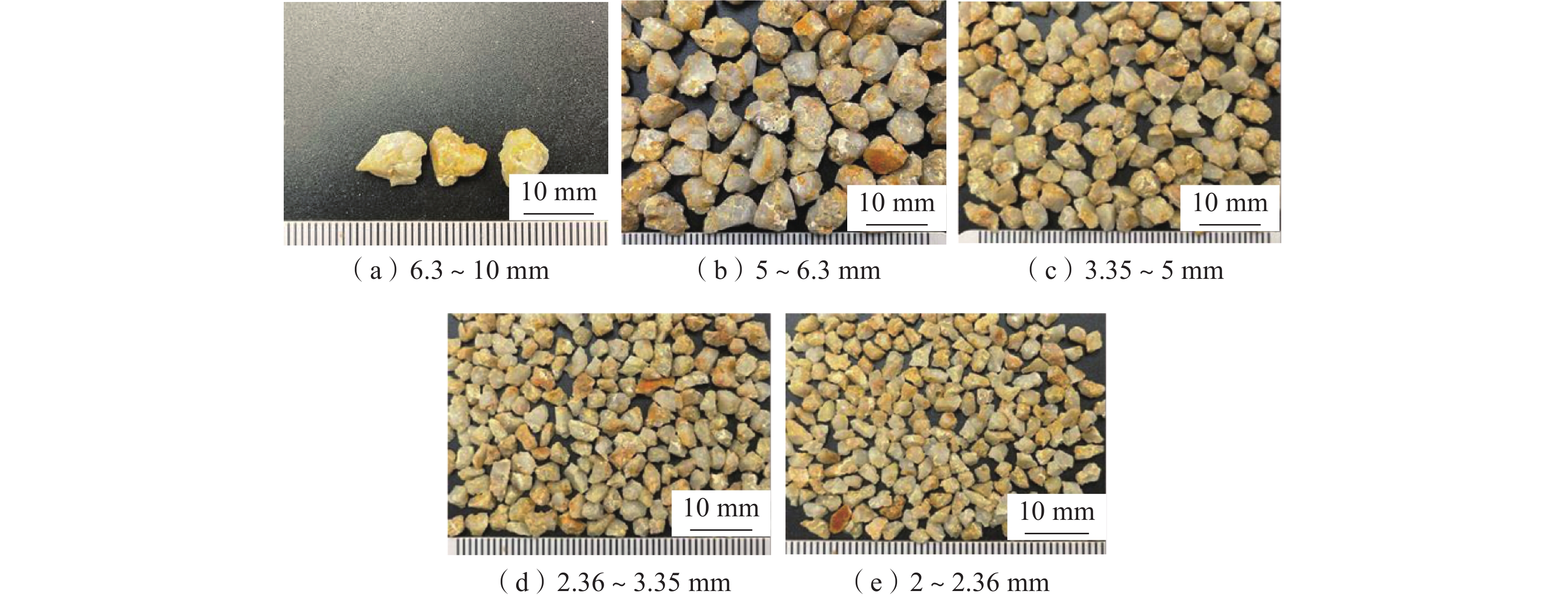




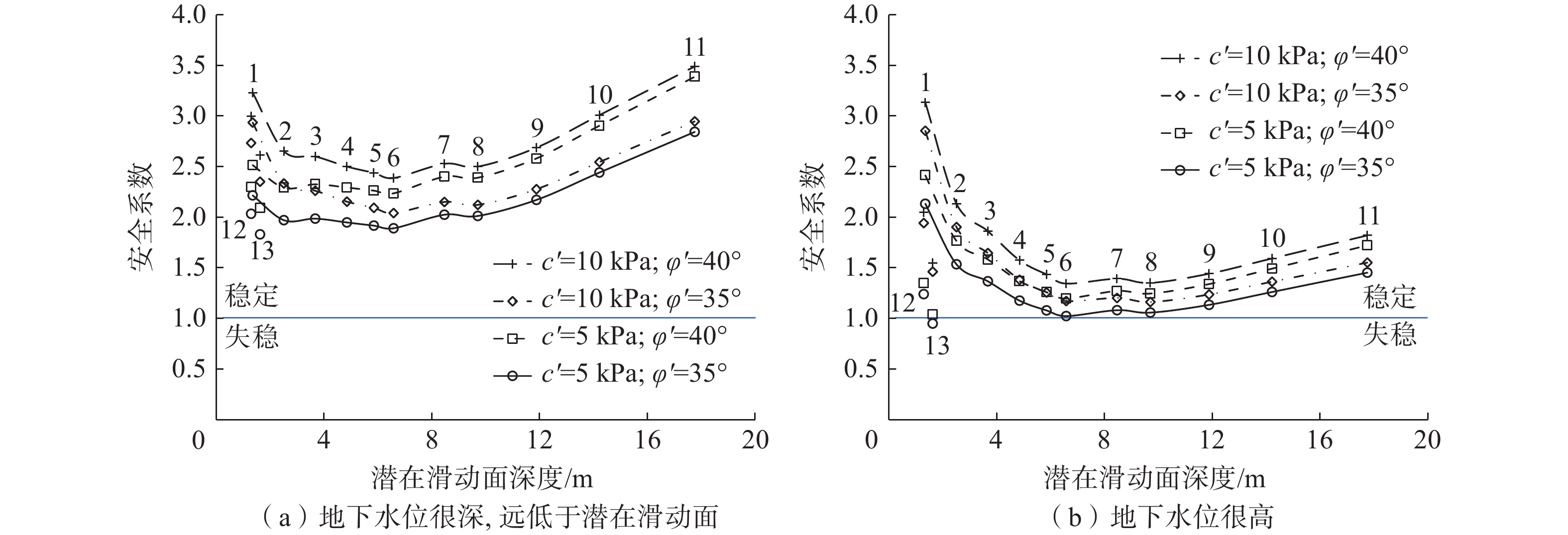

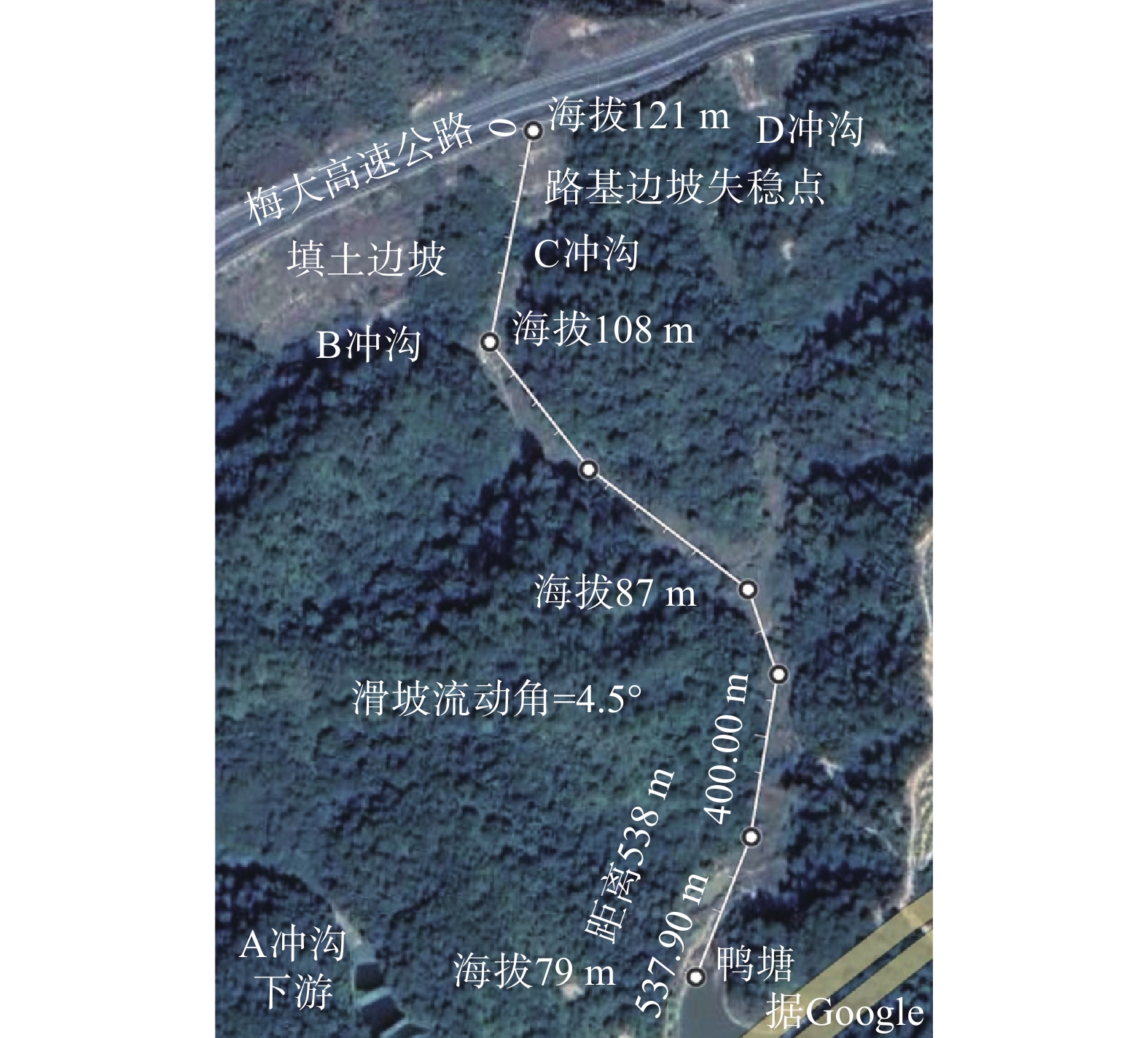
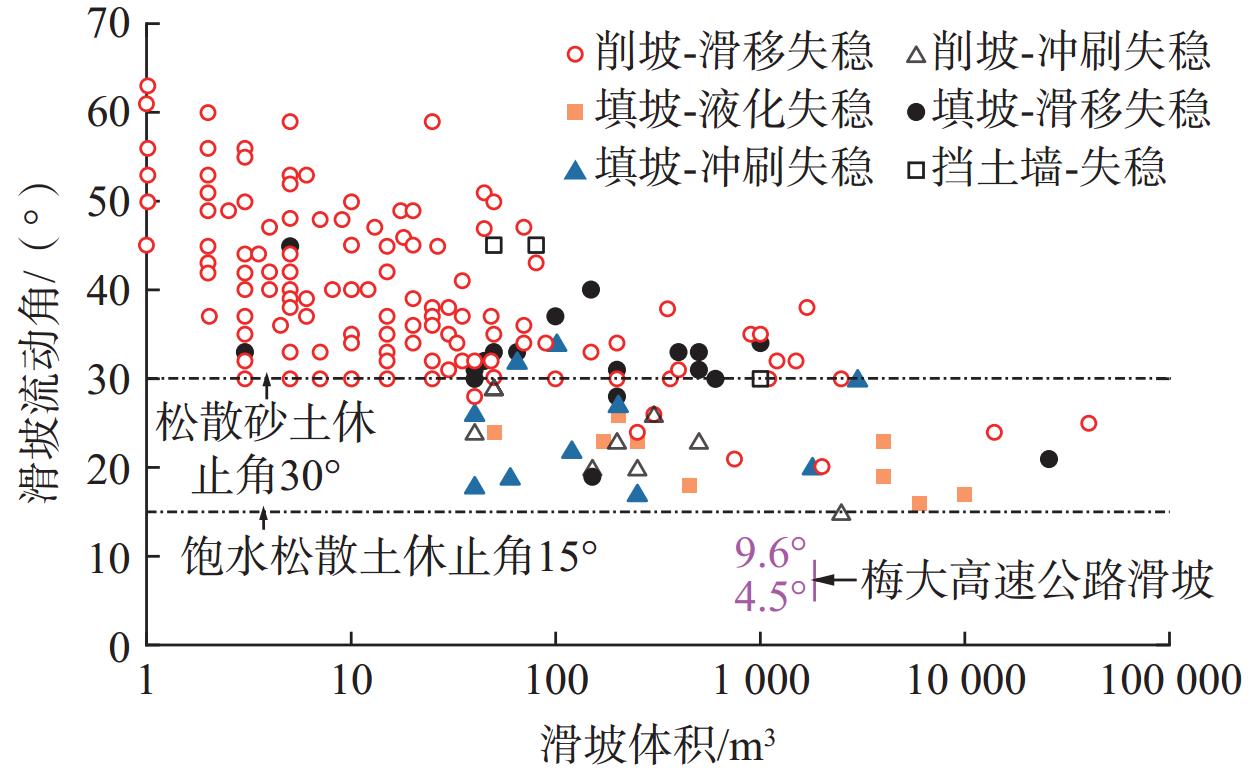



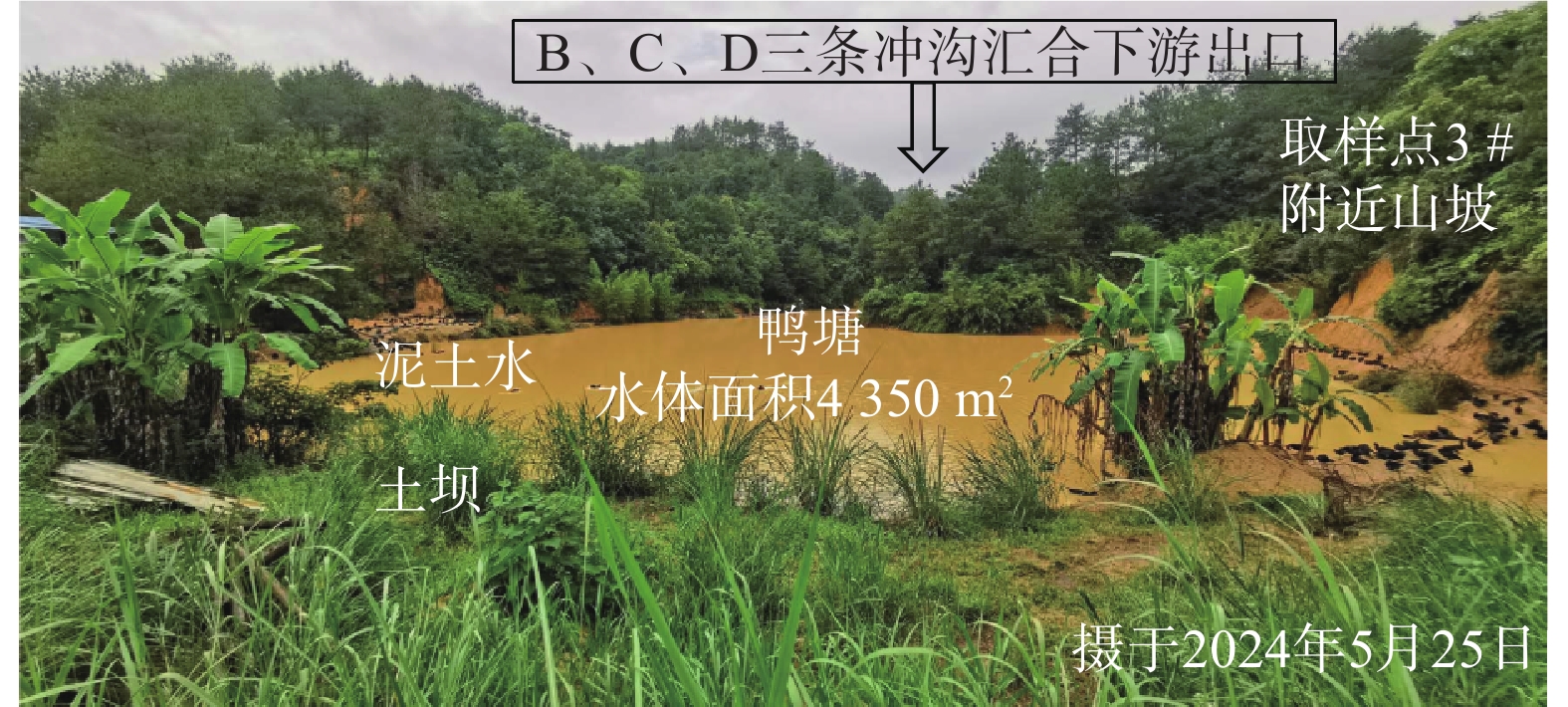

 邮件订阅
邮件订阅 RSS
RSS